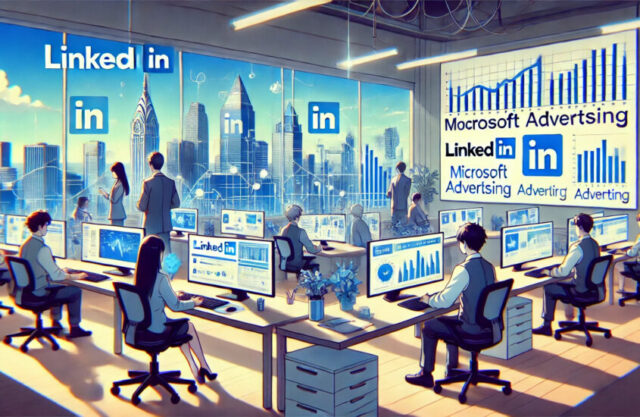In the B2B landscape, establishing connections and fostering relationships is key to driving growth and success. LinkedIn, with its professional network of over 900 million users, presents a powerful platform for B2B marketing. Among its various features, LinkedIn Sponsored Content stands out as an effective way to reach your target audience, generate leads, and promote brand awareness. Here’s how to leverage LinkedIn Sponsored Content for your B2B marketing strategy.

1. Understand Sponsored Content
LinkedIn Sponsored Content is a form of native advertising that allows businesses to promote their content directly in the LinkedIn feed of their target audience. Unlike traditional display ads, Sponsored Content blends seamlessly with organic posts, making it less intrusive and more engaging for users. It can include a variety of formats, such as text, images, videos, and carousels.
2. Define Your Target Audience
Before launching your Sponsored Content campaign, clearly define your target audience. LinkedIn offers robust targeting options that allow you to reach specific demographics based on:
- Industry: Target specific sectors like technology, finance, healthcare, etc.
- Job Title: Focus on decision-makers or key influencers in your target organizations.
- Company Size: Tailor your content for small businesses, mid-sized companies, or large enterprises.
- Location: Narrow your audience based on geographic regions or countries.
Utilizing these targeting options ensures your content reaches the right people, maximizing your campaign’s effectiveness.
3. Create Compelling Content
The success of your Sponsored Content heavily relies on the quality and relevance of your content. Here are some tips for creating engaging posts:
- Value-Driven: Focus on providing value to your audience. Share insights, industry trends, case studies, or tips that solve their pain points.
- Engaging Visuals: Incorporate eye-catching images or videos that capture attention and encourage engagement. Ensure visuals align with your brand identity.
- Clear Messaging: Craft concise, clear, and compelling messaging. Use headlines that grab attention and encourage users to click through.
- Strong Call-to-Action (CTA): Include a clear CTA that guides users on the next steps, whether it’s visiting your website, downloading a resource, or signing up for a webinar.
4. Leverage LinkedIn’s Ad Formats
LinkedIn offers several ad formats for Sponsored Content, allowing you to choose the one that best fits your goals:
- Single Image Ads: Promote a single image with accompanying text and a CTA.
- Video Ads: Share engaging video content that can showcase your brand’s story, product demonstrations, or customer testimonials.
- Carousel Ads: Use multiple images or videos in a single ad that users can swipe through, allowing for deeper storytelling and engagement.
- Event Ads: Promote upcoming webinars, workshops, or other events to generate sign-ups.
Select the format that aligns with your objectives and resonates with your audience.
5. Set a Budget and Schedule
Establish a budget for your Sponsored Content campaign based on your marketing goals. LinkedIn allows you to choose between:
- Cost Per Click (CPC): Pay only when users click on your content.
- Cost Per Impression (CPM): Pay for every 1,000 impressions of your ad.
Decide on a daily or total budget, and choose a campaign schedule that aligns with your business goals. Consider testing different times and days to see when your audience is most engaged.
6. Monitor and Optimize Your Campaign
Once your Sponsored Content is live, monitor its performance regularly. LinkedIn provides valuable analytics, including:
- Engagement Metrics: Track likes, shares, comments, and clicks to gauge how well your content resonates with your audience.
- Conversion Rates: Measure how many users take the desired action after engaging with your content.
- Demographic Insights: Analyze which segments of your audience are engaging with your content to refine your targeting.
Based on these insights, optimize your campaign by adjusting your content, targeting, or budget to enhance performance.
7. Retargeting for Increased Engagement
LinkedIn offers retargeting options to re-engage users who have previously interacted with your brand. By showing Sponsored Content to users who have visited your website or engaged with your content, you can nurture leads and encourage them to take action. This strategy can significantly increase conversion rates and drive qualified traffic to your offerings.
8. Experiment with A/B Testing
To maximize the effectiveness of your Sponsored Content, consider implementing A/B testing. Test different variations of your ads, such as:
- Headlines
- Images or videos
- CTAs
- Targeting options
By analyzing the performance of each variation, you can identify what resonates best with your audience and refine your approach for future campaigns.
Conclusion
LinkedIn Sponsored Content is a powerful tool for B2B marketing, enabling businesses to connect with their target audience effectively. By understanding the platform, defining your audience, creating compelling content, and continuously monitoring and optimizing your campaigns, you can harness the full potential of LinkedIn to drive leads and enhance brand awareness. Start implementing these strategies today and watch your B2B marketing efforts thrive on LinkedIn!


No responses yet